
Key Highlights:
- Portalgraph technology by Beleve Vision converts any screen into headset-free 3D VR display without specialized hardware, winning TGS Audience Award Grand Prix and CES 2024/2025 recognition for breakthrough immersive experiences
- Maharashtra’s AVGC-XR Policy 2025 targets ₹3,268 crore ($3.67B) investment with ₹50,000 crore ($56B) overall investment goal, establishing XR as essential service with 24/7 operations across 8 dedicated parks
- NCERT partnership with EON Reality aims to transform education for 89 million students initially, scaling to 265 million K-12 learners through AR/VR immersive textbook experiences across multiple Indian languages
- Holographic TV market projected to grow from $4.38 billion in 2024 to $11.96 billion by 2029 at 21.7% CAGR, driven by medical imaging applications and gaming integration demand
- India lacks comprehensive regulatory framework for immersive technologies requiring urgent policy development addressing data privacy, cybersecurity, and biometric data collection through holographic systems
The Dawn of Headset-Free Immersive Reality
The entertainment and technology landscape is witnessing a paradigmatic shift with the emergence of Portalgraph technology by Beleve Vision, which promises to transform any existing screen into an immersive 3D VR display without requiring specialized hardware or headsets. This award-winning innovation has captured global attention by winning the TGS Audience Award Grand Prix, XR Creative Award, and Best Technological Game Award, while impressing audiences at CES 2024/2025.
Unlike traditional VR headsets that isolate users from their immediate surroundings, Portalgraph operates in the real world, allowing viewers to interact simultaneously with the display, environment, and other viewers. The technology processes visual data in a new way to deliver multi-dimensional effects on devices people already own, including TVs, projectors, and computer monitors.
For India’s rapidly expanding XR (Extended Reality) ecosystem, this development comes at a crucial juncture. Maharashtra’s AVGC-XR Policy 2025 has allocated ₹3,268 crore ($3.67 billion) with a ₹50,000 crore ($56 billion) overall investment target, positioning XR as an essential service that can operate 24/7, 365 days a year. The convergence of breakthrough display technology with supportive policy frameworks creates unprecedented opportunities for India to become a global leader in immersive technology development. xrtoday
The significance extends beyond entertainment: with applications spanning healthcare, education, defense, and governance, holographic display technology represents a fundamental shift in human-computer interaction that requires comprehensive policy frameworks and regulatory oversight to ensure equitable access, data protection, and national security.
Understanding Portalgraph and Holographic Display Technology

Technical Principles and Innovation
Portalgraph represents a breakthrough in display technology by eliminating the need for specialized hardware while delivering immersive 3D experiences. The system operates through advanced visual data processing that creates multi-dimensional effects on conventional display surfaces. belevision
Core Technology Components:
Real-Time Perspective Tracking: The system projects virtual spaces directly into the real world using sophisticated tracking algorithms that adapt the display based on viewer position and movement.
Light Field Processing: Portalgraph manipulates light interference and diffraction patterns to create holographic effects that provide depth perception without requiring 3D glasses or head-mounted displays.
Adaptive Field of View: The system offers flexible viewing experiences with field of view determined by projection size, potentially exceeding the limited FOV of traditional headsets.
Unity Integration: Built on Unity software platform, Portalgraph-enabled applications can be developed using existing game development tools, accelerating content creation and adoption.
Hardware Requirements and Accessibility
Unlike expensive VR systems, Portalgraph requires minimal additional equipment:
Basic Setup Components:
- 3D projector (ultra-short-throw projectors recommended)
- 3D glasses for enhanced visual experience
- VIVE tracker and base station for precise motion tracking
- Standard PC for processing and content delivery
Alternative Configurations: The system also supports web camera tracking and standard red-blue 3D glasses, enabling VR experiences with regular PC setups.
Cost Advantage: Leon Sievers, Chief Product Officer, emphasizes that consumers don’t need to purchase specialized hardware, making the barrier to entry extremely low compared to traditional VR systems.
Applications Across Sectors: Transforming Industries
Entertainment and Gaming Revolution

Portalgraph is already partnering with entertainment and gaming industries to create customized immersive content:
Film and Media Applications:
- Movies transformed into walk-through experiences that currently exist only in science fiction
- Concerts and live events presented as 3D immersive experiences with audience participation
- Sports programming projected in 3D with interactive replays and audience tracking capabilities
Gaming Integration:
- Enhanced gaming experiences without headset limitations
- Social gaming environments where multiple players can interact with shared virtual spaces
- Platform partnerships including planned Roku channel for accessible content distribution
Content Creation Ecosystem: The company is working directly with content creators and empowering them to experiment with the platform to build a library of experiences.
Healthcare: Revolutionizing Medical Practice

Holographic technology is transforming healthcare across multiple applications:
Medical Education and Training:
- 3D anatomical models providing realistic visualization of human anatomy and physiology
- Virtual dissection capabilities without constraints of physical cadavers
- Improved knowledge scores and spatial awareness compared to traditional teaching methods
- Hands-free learning allowing students to take notes while manipulating holographic images
Surgical Planning and Navigation:
- 3D mapping of patient anatomy enabling precise surgical planning
- Real-time visualization of organs and bones during procedures
- Tumor localization with enhanced accuracy for complex operations
- Reduced surgical risks through better preoperative analysis
Patient Education and Engagement:
- Interactive explanations of medical conditions and treatment options
- Enhanced patient understanding through visual demonstrations
- Improved doctor-patient communication using 3D medical models
- Telemedicine applications with enhanced diagnostic capabilities
Research Impact: Studies show significant improvement in anatomical knowledge from hologram interventions compared to traditional printed materials, attributed to reduced cognitive load and increased spatial understanding.
Education: Transforming Learning Experiences
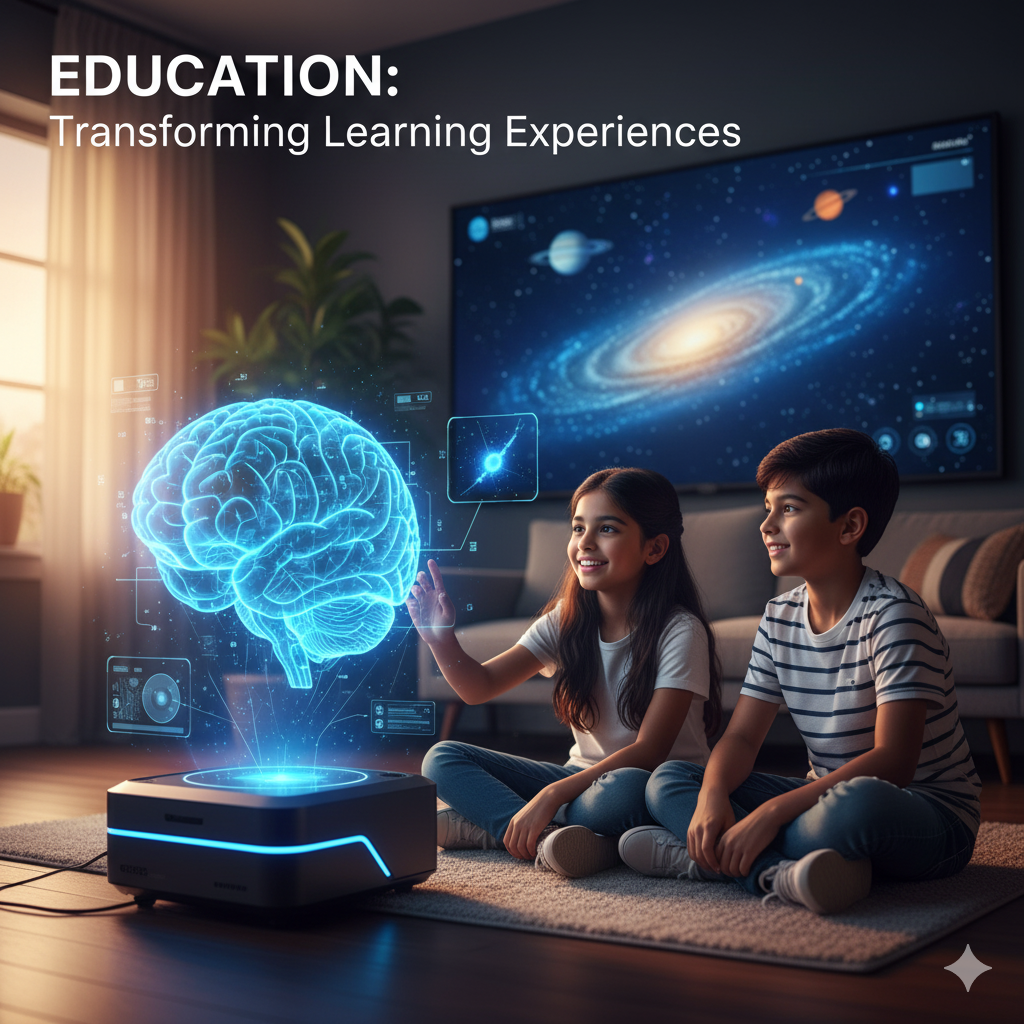
India’s education sector is embracing immersive technologies at an unprecedented scale:
NCERT-EON Reality Partnership: This historic collaboration aims to bring AR, VR, and XR experiences to 89 million students initially, with plans to scale to 265 million K-12 learners.
Key Educational Applications:
- NCERT textbooks transformed into interactive, immersive lessons
- Historical events as walk-through experiences
- 3D molecular structures in chemistry education
- Physics experiments in virtual laboratory environments
- Multilingual content supporting regional language learning
AI-Powered Personalization: The initiative leverages advanced AI tutoring systems that tailor educational content to individual learning styles, pace, and proficiency.
Teacher Empowerment: National Teacher Empowerment Program will upskill educators in immersive content delivery through XR-based professional development.
Engineering and Defense Applications
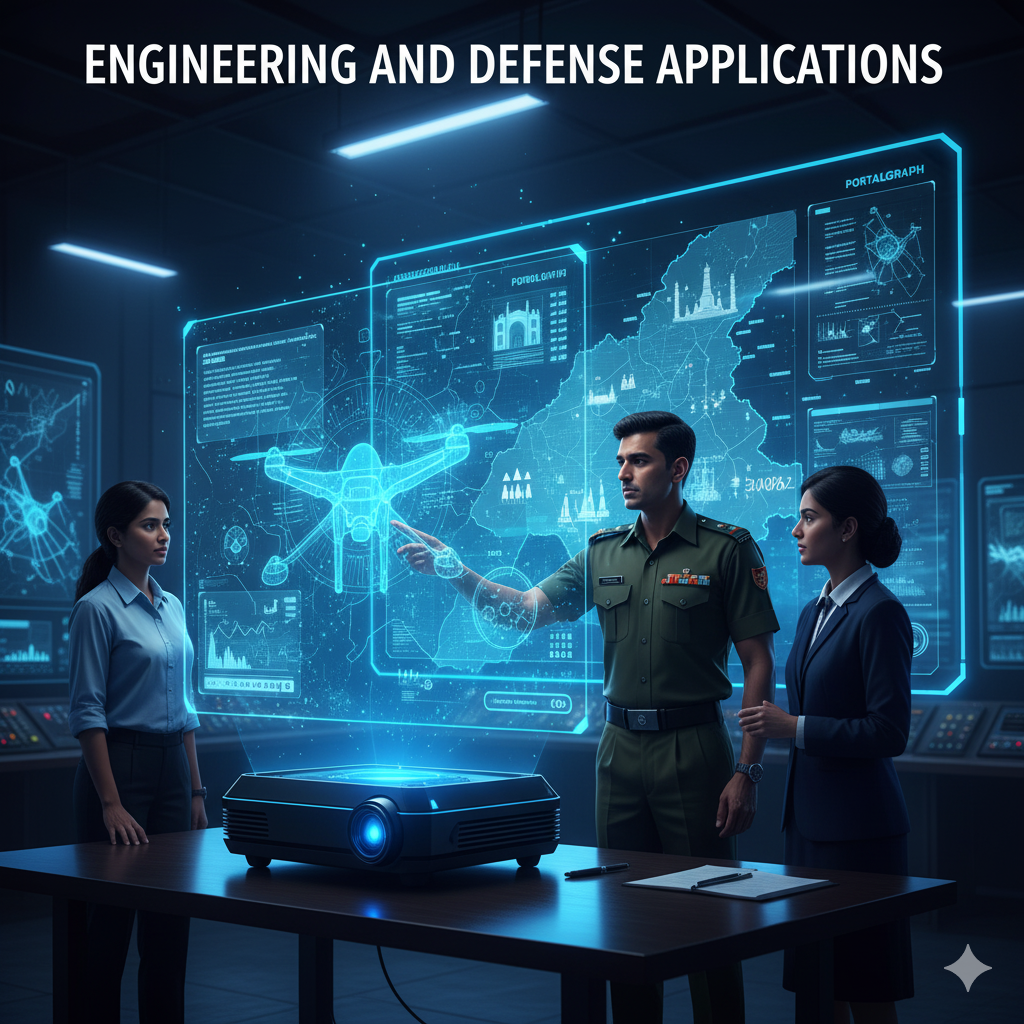
Professional and Strategic Applications demonstrate holographic technology’s versatility:
Engineering and Design:
- Virtual prototyping reducing physical testing costs
- Architectural visualization enabling client walkthroughs
- Collaborative design processes with remote team participation
- Complex data visualization for engineering analysis
Defense and Security:
- UAV simulation training providing realistic flight experiences
- Real-time dynamic scene visualization for tactical planning
- Training simulations for complex operational scenarios
- Enhanced situational awareness through 3D data representation
India’s Policy and Regulatory Framework

Current Government Initiatives
India’s approach to immersive technology reflects strategic recognition of XR’s transformative potential:
Maharashtra AVGC-XR Policy 2025:
- ₹3,268 crore ($3.67 billion) direct investment with ₹50,000 crore ($56 billion) overall target
- XR classified as essential service with 24/7 operational permissions
- Dedicated AVGC-XR Parks in 8 major cities including Mumbai, Pune, Nashik, and Nagpur
- Industry status providing infrastructure sector benefits
National Education Integration:
- NCERT partnership targeting 265 million students
- Alignment with NEP 2020 and PRAGYATA Guidelines for digital education
- Multilingual content delivery supporting linguistic diversity
- Accessibility provisions for children with disabilities
Digital India Framework:
- MeitY Startup Hub and Meta’s XR Startup Program fostering AR/VR ecosystem development
- NIELIT’s AR/VR training under FutureSkills PRIME for capacity building
- Transition from technology consumer to producer of emerging technologies
Regulatory Gaps and Challenges
Despite policy initiatives, India lacks comprehensive regulatory frameworks for immersive technologies:
Data Protection Deficiencies:
- Current IT Act provisions may not adequately cover holographic and AR/VR data processing
- Collection of audiovisual, physiological, and biometric data through immersive systems requires specialized regulations
- Personal data protection legislation needs expansion to cover immersive technology applications
Cybersecurity Vulnerabilities:
- Connected immersive systems create potential attack vectors
- Real-time data processing requires enhanced security protocols
- Cross-border data transfers in global immersive applications need regulatory clarity
Intellectual Property Challenges:
- User-generated content in immersive environments raises copyright questions
- Licensing frameworks for holographic content remain underdeveloped
- Digital rights management in 3D spaces requires new legal approaches
Global Market Trends and Competitive Landscape
Market Growth Projections
The holographic TV market demonstrates explosive growth potential: openpr
Market Expansion Timeline:
- 2024: $4.38 billion global market size
- 2025: $5.45 billion (24.6% CAGR)
- 2029: $11.96 billion projected (21.7% CAGR)
Growth Drivers:
- Medical imaging applications driving healthcare adoption
- Gaming and entertainment integration expanding consumer markets
- Smart home integration creating residential deployment opportunities
- Content ecosystem development supporting sustainable growth
Technological Advancement Trends
Emerging developments are enhancing holographic display capabilities:
Advanced Display Technologies:
- Metasurfaces enabling programmable optical manipulation
- Spatial light modulators improving image quality and resolution
- Increased field of view (120°-180°) approaching human vision capabilities
- AI-driven hologram generation reducing computational requirements
Industry Collaboration Patterns:
- Entertainment companies developing specialized holographic content
- Broadcasting partnerships creating immersive sports and news experiences
- Production companies investing in holographic filming equipment
- Technology integrators building end-to-end immersive solutions
Governance and Policy Challenges
Data Privacy and Security Imperatives
Immersive technologies present unprecedented data collection capabilities requiring sophisticated regulatory responses:
Data Categories Requiring Protection:
- Biometric data from eye tracking and facial recognition
- Physiological responses including heart rate and movement patterns
- Behavioral data from interaction with virtual environments
- Spatial mapping of private spaces and personal environments
Regulatory Framework Requirements:
- Explicit consent mechanisms for immersive data collection
- Data minimization principles limiting collection to essential functions
- Cross-border data transfer regulations for global immersive services
- Right to deletion and data portability in immersive contexts
Digital Divide and Accessibility
Ensuring equitable access to holographic technologies presents significant policy challenges:
Infrastructure Prerequisites:
- High-bandwidth internet connectivity for real-time immersive experiences
- Reliable power supply supporting continuous operation
- Device affordability for widespread adoption across economic segments
Social Inclusion Imperatives:
- Accessibility features for users with disabilities
- Multilingual interfaces supporting linguistic diversity
- Rural connectivity ensuring geographic equity in technology access
- Digital literacy programs enabling effective technology utilization
Economic and Employment Implications
Holographic technology adoption will reshape employment markets and economic structures:
Job Creation Opportunities:
- Content development requiring specialized creative skills
- Software engineering for immersive applications
- Technology services including installation and maintenance
- Training and education services for technology adoption
Skill Development Requirements:
- XR technology training for existing workforce
- Educational curriculum updates incorporating immersive technology skills
- Professional certification programs for quality assurance
- Entrepreneurship support for immersive technology startups
Policy Recommendations for Comprehensive Governance
Regulatory Framework Development
India requires comprehensive legislation addressing immersive technology governance:
Privacy and Security Legislation:
- Expand data protection laws to cover biometric and behavioral data collected through holographic systems
- Establish consent frameworks specific to immersive technology applications
- Create cybersecurity standards for connected immersive devices
- Implement audit requirements for companies processing immersive data
Consumer Protection Measures:
- Mandatory disclosure of data collection practices in immersive applications
- Age-appropriate restrictions for immersive content access
- Health and safety guidelines for extended immersive technology use
- Grievance redressal mechanisms for immersive technology disputes
Innovation and Industry Development
Strategic policies can position India as global immersive technology leader:
Make in India Integration:
- Incentivize local manufacturing of holographic display components
- Support indigenous R&D through public-private partnerships
- Establish technology transfer agreements with global innovators
- Create startup incubators focusing on immersive technology development
Infrastructure Investment:
- 5G network expansion supporting high-bandwidth immersive applications
- Edge computing facilities reducing latency for real-time experiences
- Digital infrastructure development in rural and underserved areas
- Power grid modernization supporting energy-intensive immersive systems
Education and Capacity Building
Human resource development is critical for successful adoption:
Educational Integration:
- Curriculum development incorporating immersive technology principles
- Teacher training programs for effective technology utilization
- Research initiatives exploring pedagogical applications of holographic displays
- International collaboration for knowledge sharing and best practices
Professional Development:
- Government official training on immersive technology governance
- Industry certification programs ensuring quality standards
- Continuous learning platforms for technology skill updates
- Cross-sector knowledge exchange between technology and policy communities
Strategic Vision for India’s Immersive Future
Positioning as Global Hub
India has unique advantages for immersive technology leadership:
Competitive Strengths:
- Large English-speaking technical workforce
- Established software development ecosystem
- Cost-effective innovation capabilities
- Diverse content creation potential
- Growing domestic market demand
Strategic Initiatives:
- Export promotion policies for immersive technology products and services
- International partnerships for technology development and market access
- Intellectual property protection encouraging innovation investment
- Quality certification systems building global trust in Indian immersive technologies
Governance Applications
Holographic technology can transform government service delivery:
Public Service Enhancement:
- Virtual citizen service centers providing remote access to government services
- Immersive public awareness campaigns improving policy communication
- 3D data visualization for evidence-based policy making
- Remote consultation systems for expert advisory services
Smart City Integration:
- Holographic displays in public spaces for information dissemination
- Immersive planning tools for urban development projects
- Virtual reality training for government officials and public servants
- Digital heritage preservation through holographic documentation
Conclusion: Shaping India’s Immersive Technology Destiny
Portalgraph’s breakthrough holographic TV technology represents more than a display innovation – it signals the democratization of immersive experiences by eliminating hardware barriers that have limited VR adoption. With Maharashtra’s ₹50,000 crore investment commitment and nationwide education initiatives targeting 265 million students, India is positioning itself at the forefront of the global immersive technology revolution.
The convergence is remarkable: award-winning technology that transforms any screen into an immersive display meets supportive policy frameworks that classify XR as essential infrastructure. The holographic TV market’s projected growth from $4.38 billion to $11.96 billion by 2029 demonstrates substantial commercial opportunities that India is uniquely positioned to capture.
However, significant challenges remain: regulatory gaps in data protection, cybersecurity vulnerabilities, and the digital divide require immediate policy attention. The collection of biometric and behavioral data through immersive systems demands comprehensive privacy legislation that current IT Act provisions may not adequately address.
For UPSC aspirants and governance professionals, this technological transformation illustrates critical intersections between innovation policy, digital governance, and social inclusion. Understanding how holographic displays can enhance education, healthcare, and public service delivery while managing associated risks becomes essential for effective governance in the digital age.
The opportunity is unprecedented: headset-free immersive technology can bridge digital divides by working with existing screens, while policy frameworks like Maharashtra’s AVGC-XR initiative provide institutional support for scaling adoption. Success requires balanced approaches that encourage innovation while protecting citizen rights and ensuring equitable access.
India’s immersive technology journey will determine whether breakthrough innovations like Portalgraph become tools for inclusive development or exacerbate existing inequalities. The choices made today in policy design, regulatory frameworks, and infrastructure investment will shape how 1.4 billion Indians experience digital transformation and participate in the global immersive economy.
The revolution is already beginning – the question is whether India will lead it or merely participate. With the right policies, adequate investment, and inclusive implementation, holographic TV technology could transform India from a technology consumer into a global immersive technology superpower.
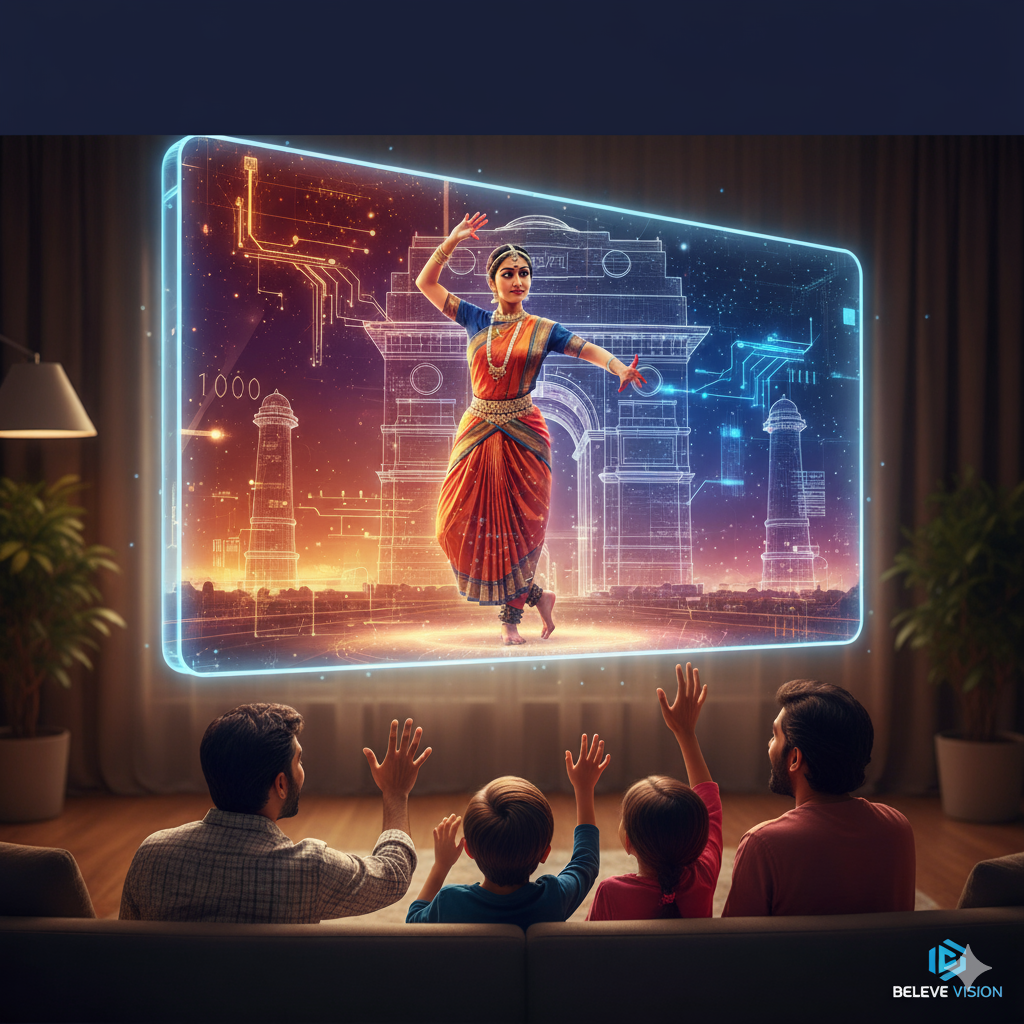
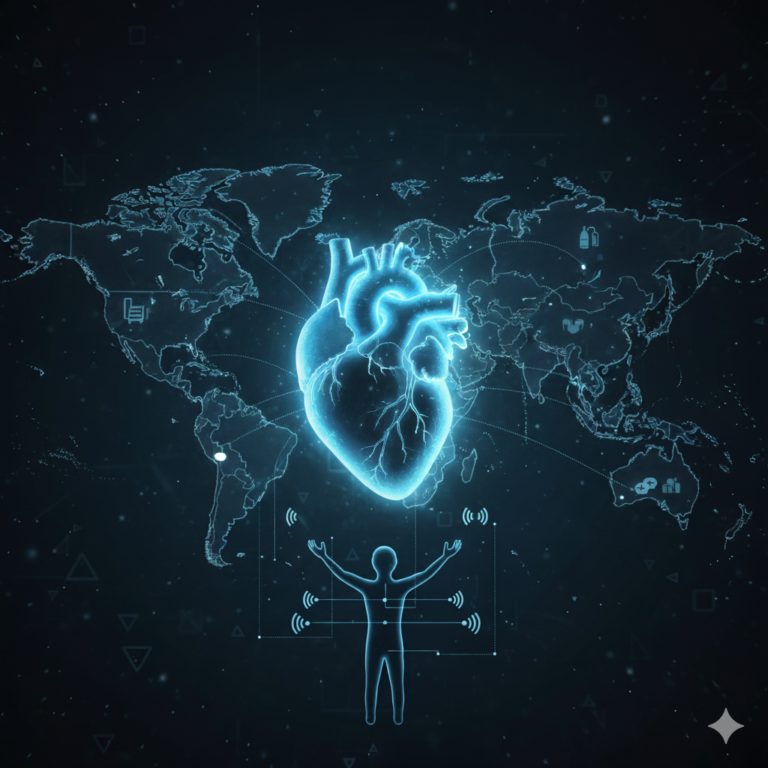
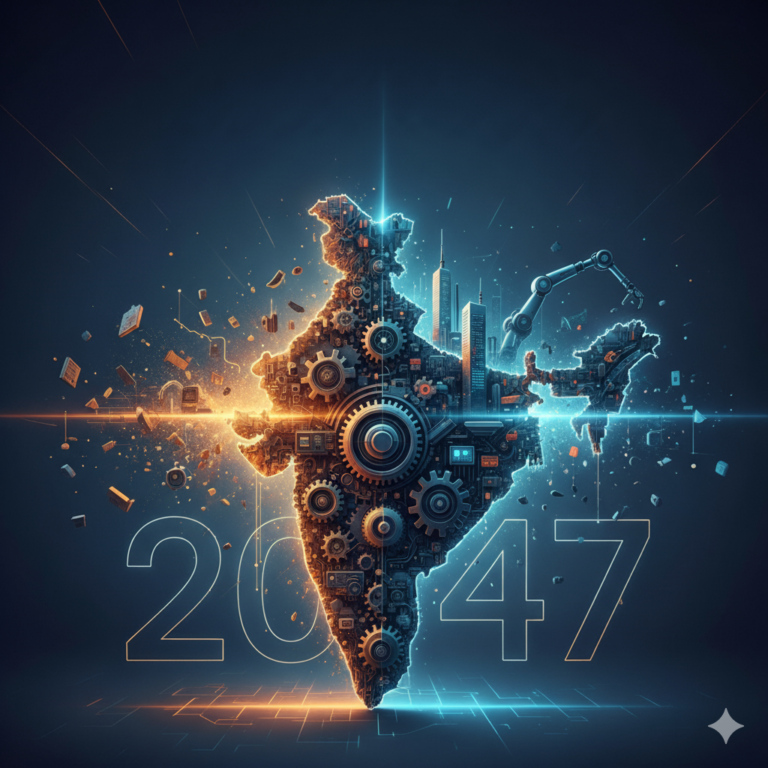
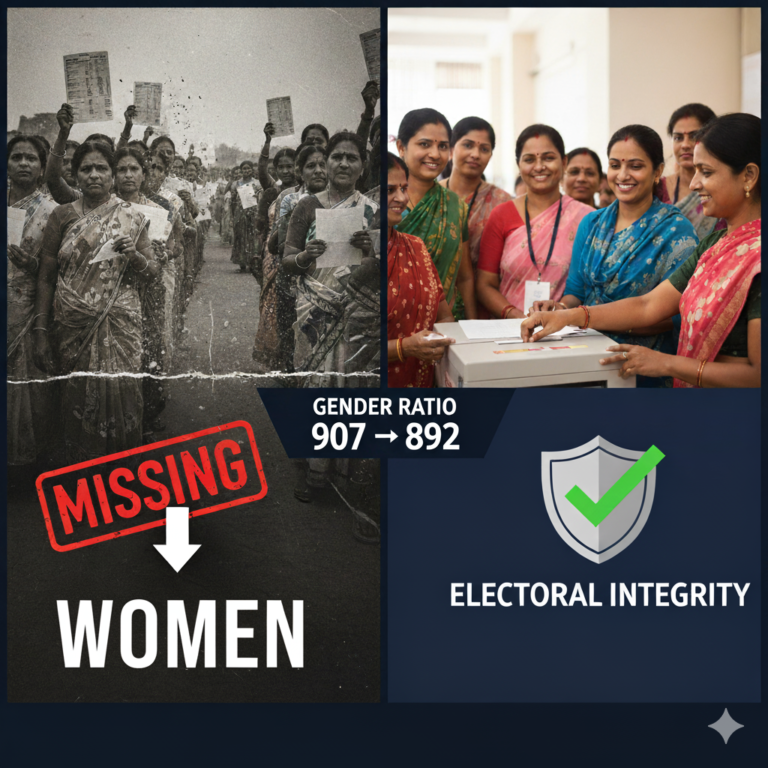
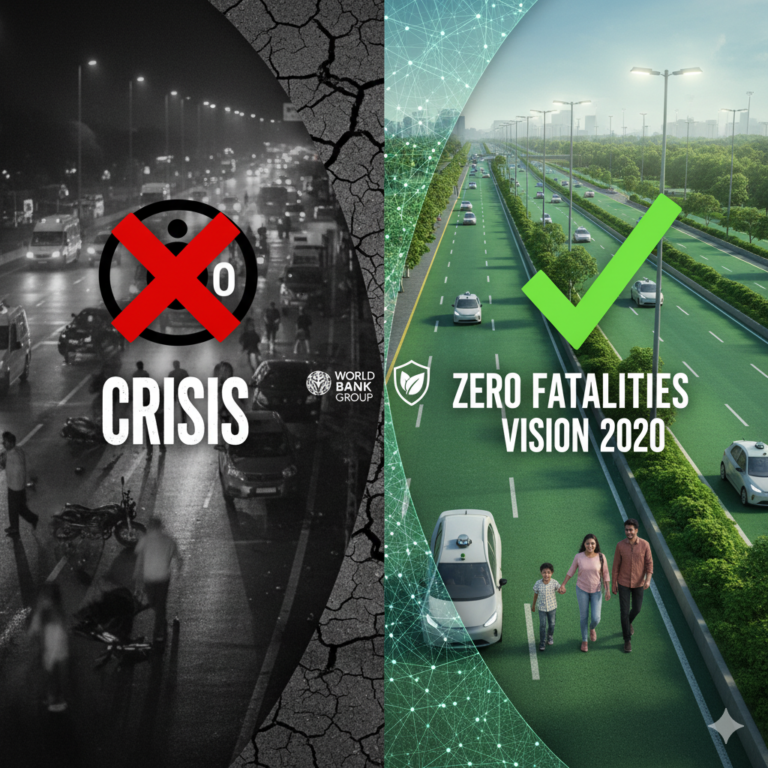

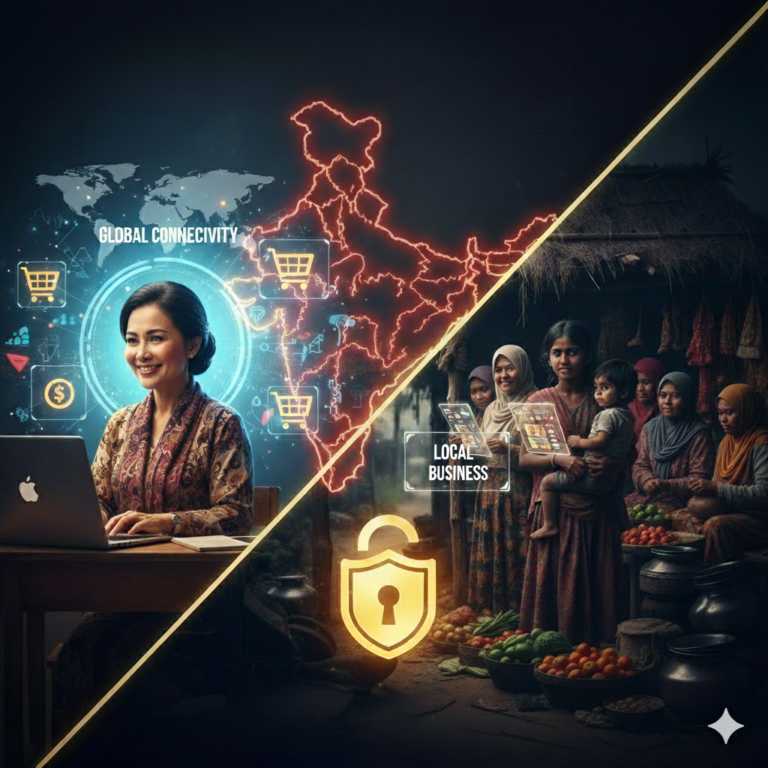
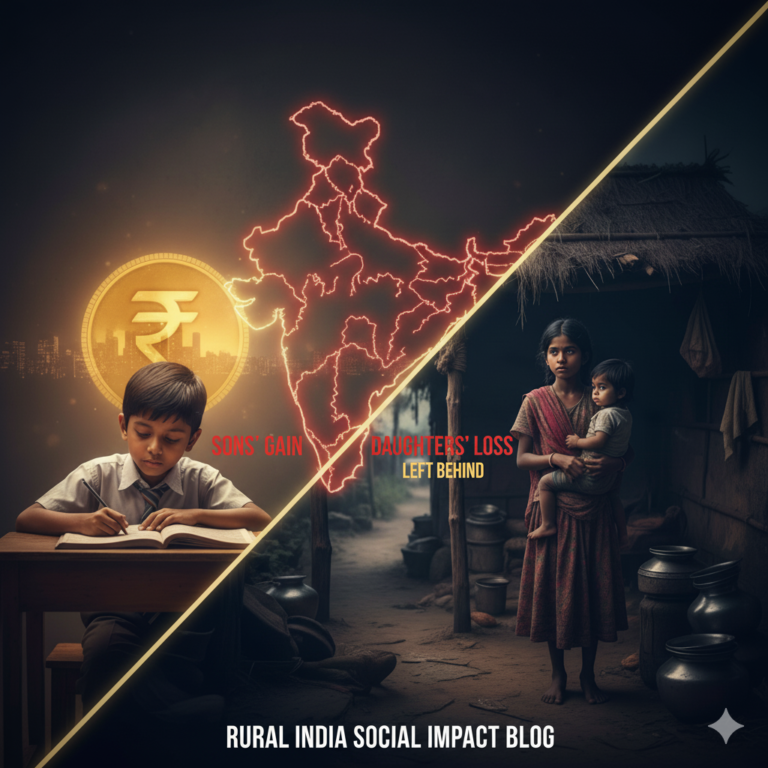
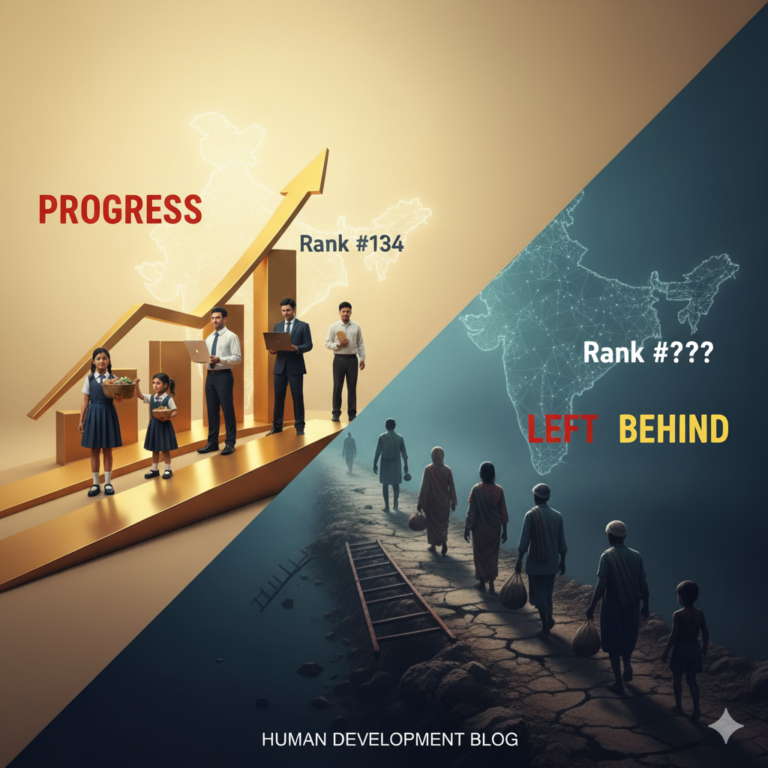
+ There are no comments
Add yours